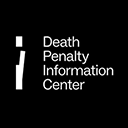
Benjamin Ritchie’s execution in Indiana on May 20, 2025, has raised new concerns about the use of pentobarbital after defense counsel reported their client displayed an unusual physical reaction after being injected with the drug. But because Indiana officials bar media witnesses from observing executions, the public has no independent witness reports on what transpired.
Steve Schutte, an attorney for Mr. Ritchie, told the Indiana Capital Chronicle that Mr. Ritchie made what appeared to be “violent” movements, lifting his head and shoulders abruptly from the gurney soon after it is believed the drugs began to flow. Two additional witnesses at Mr. Ritchie’s execution corroborated Mr. Schutte’s account. But an Indiana Department of Correction (IDOC) spokesperson disputed these observations, telling the Capital Chronicle that Mr. Schutte’s account “is not an accurate description of the circumstances” and maintaining that Mr. Ritchie’s “execution was completed according to protocol.” These conflicting accounts underscore the value of having media witnesses available to provide independent accounts of executions. Indiana is one of only two states that prevent media witnesses from observing executions.
“[C]learly, this was botched …[pentobarbital] should be really, really effective — really fast. No one should move.”
Dr. Jonathan Groner, Emeritus Clinical Professor of surgery at Ohio State University College of Medicine told the Capital Chronicle that what Mr. Schutte and other witnesses described is “not what is supposed to happen” when pentobarbital is administered. Dr. Groner said “clearly, this was botched,” adding that pentobarbital “should be really, really effective — really fast. No one should move…It’s just lights out, go to sleep, no reaction, no coughing, no nothing. They just don’t move.”
Ahead of Mr. Ritchie’s scheduled execution, five news outlets, including the Capital Chronicle, filed a lawsuit seeking access to executions, including Mr. Ritchie’s. The suit argued that Indiana’s law discriminates against journalists by allowing spiritual advisors and family members to attend while barring members of the press. Judge Matthew Brookman denied the news outlets’ request, noting that “at bottom, Indiana law treats members of the press the same as members of the public at large” and should not be accorded “differential treatment.”
Reporters may now only witness an execution if chosen to fill one of five spots allotted to the prisoner; last December, a media witness reported on the execution of Joseph Corcoran after being included on Mr. Corcoran’s guest list.
“It’s really important that journalists are present to bear witness to this exercise of power…I think the state wants us to look away from the idea of the death penalty. And maybe to a certain extent, people want to look away and not witness the death penalty being enacted, but I think it’s incumbent upon citizens, if they endorse this action — perhaps especially if they endorse this action by a state government — to acknowledge that it takes place, and to look at it.”
A November 2024 survey from the Death Penalty Information Center found that only Indiana and Wyoming prohibit the presence of media witnesses during executions. Some states allow media access only at the discretion of the departments of correction, and generally, states differ on whether the departments of correction select individual journalists or designate media outlet which are then permitted to select the journalist who will attend.
Observers have noted that media can provide an essential check on government power, given that executions are not public, and because many execution protocols and processes are kept secret by law or practice. Journalists can function as crucial intermediaries for the public, monitoring how state officials conduct executions and spend taxpayer dollars. As Rhonda Cook, an Atlanta Journal-Constitution reporter who has witnessed 28 executions, explains: “We’re the ones that are there as the eyes and ears of the public, and we’re there to ensure that the state does it correctly.” The oversight role of media witnesses is especially important when official government statements on executions conflict with other witness observations, or when there are complications during the execution.
For example, when Kenneth Smith was executed by nitrogen gas in January 2024: Alabama publicly assured the public and the courts that nitrogen gas would cause “unconsciousness in seconds,” yet witnesses reported that Mr. Smith “shook and writhed” for at least four minutes. Despite the contradiction between expectations and observations, Alabama Attorney General Steve Marshall told the press that the process was “textbook.” Media witnesses, however, reported about the anomalies. Lee Hedgepeth, a reporter who has witnessed several executions, said that “this was the fifth execution that I’ve witnessed in Alabama, and I have never seen such a violent reaction[.]”
In December 2024, Indiana carried out its first execution in 15 years, administering a lethal injection to Joseph Corcoran. This execution marked the state’s shift away from its previously used three-drug protocol to reliance only on pentobarbital — a fast-acting barbiturate often used as a sedative in medical procedures. The U.S. Food and Drug Administration has not approved pentobarbital for use in executions or causing human deaths, and the Department of Justice withdrew a similar protocol in the waning days of the Biden Administration because of serious concerns regarding its use.
Casey Smith, ‘Violent’ moment during Indiana executions draws scrutiny; DOC officials deny ‘botched’ process, Indiana Capital Chronicle, May 22, 2025; Casey Smith, Federal judge rejects preliminary injunction request to open Indiana executions to media, Indiana Capital Chronicle, May 16, 2025; Casey Smith, Death row inmate Joseph Corcoran executed for quadruple murder, Indiana Capital Chronicle, December 18, 2024; Alander Rocha, Alabama attorney general defends first execution by nitrogen gas, anticipates national trend, Alabama Reflector, January 26, 2024.
